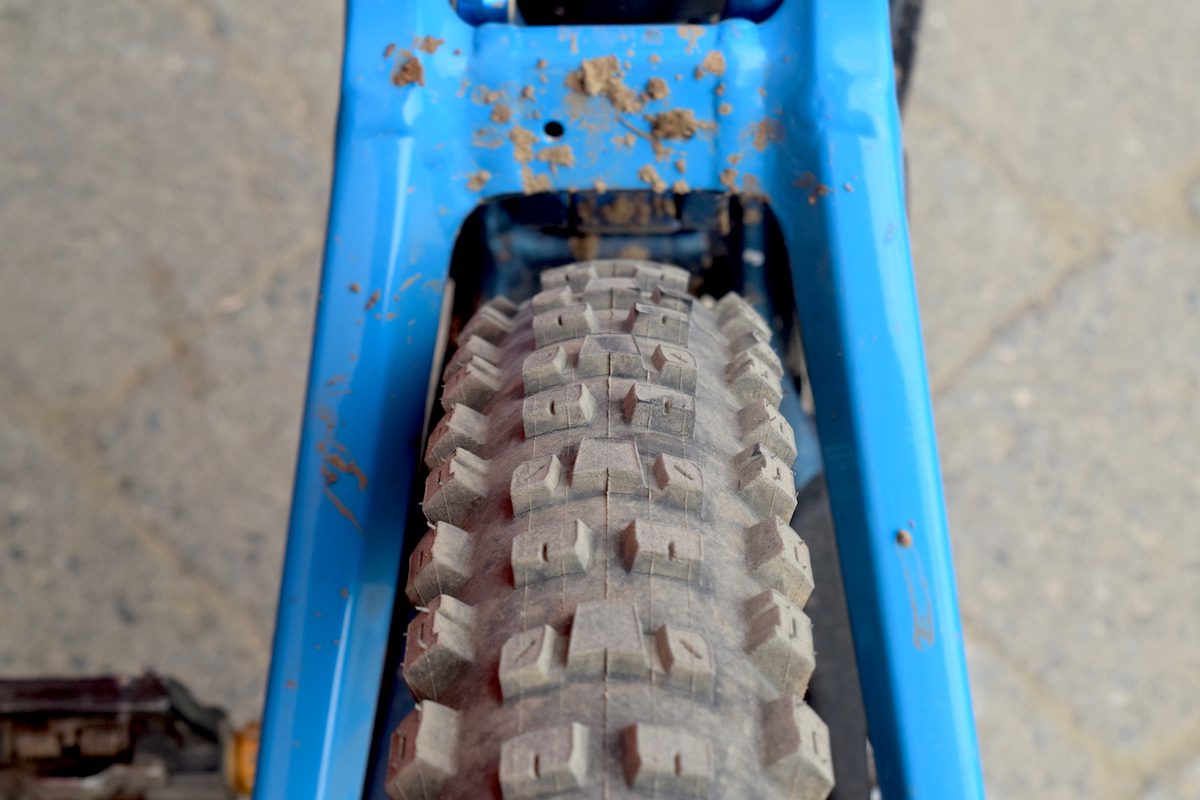Six tips for faster cornering
How to crush corners on a mountain bike
 Photo by:
BCBR Margus Riga
Photo by:
BCBR Margus Riga
Carrying speed through a corner is one of the hardest skills to master in mountain biking. Once your comfortable on the endge, railing corners is also one of the most fun parts of riding bikes. So, how do you go from tiptoeing around the bend to crushing corners with confidence?
There are many ways to improve your cornering technique and confidence. Here are six to start with.

1) Look where you want to go
Physically looking at where you want to go on the trail is the first step to getting around a corner cleanly. Your body and bike will follow where you’re looking, so if you want to go around a corner, keep your eyes up and looking at the exit of the corner. If you look down at the edge of the trail or top of a berm, that’s where you’ll end up. Which is helpful if it’s a rock, or another corner. It’s kind of like how, in hockey, you look at where you want the puck to go, not at the goalie. Unless you’re Sidney Crosby (or Brandon Semenuk) if you look at what you want to avoid, not where you want to go, you’re more likely to end up where you were trying to avoid, not where you want. Bonus: If you look at the exit of the corner, you’ll start seeing what’s next on the trail after the corner.
2) The “Laser Pointer” technique
A little body English can go a long way when you’re trying to corner faster. Looking where you want to go will start to point your body in the right direction. Consciously making an effort to turn your core in the direction you want to go will help. There are different ways to think about this. Some people like to point their knees, others think about turning their hips or chest. The goal is the same: to get your momentum pointed through the corner, not out of it. One way to make this fun is to think of a laser shooting out of your belly button. Point the laser where you want to go, and the bike will follow.

3) Lean the bike
Your tires have all those fancy side lugs for a reason, so you might as well use them. To engage the side lugs, you have to really lean the bike over. If you find a corner you’re already comfortable on, you can practice leaning further and further until you can tell when the tire rolls from the center row of knobs onto the side lugs. Leaning the bike over will also help it turn naturally. Find an open field, gravel path or empty road to practice leaning the bike, and feeling how that helps the bike turn.
RELATED: Cornering basics in Squamish with Finn Iles
4) Keep your weight centered
A big part of being able to lean the bike is keeping your weight centered on the bike. That means centered fore and aft as well as side to side. A good way to think of this is trying to keep your weight on top of the contact patch where the tire touches the ground. Why? Get to far forward and you could OTB. Too far back, and you won’t have enough weight on your front tire to actually turn the bike. Put your weight too far to the inside of a corner and you risk having the bike washing out from under you. Keeping your weight centered over the tires helps evenly maintain the downward pressure on the tires that gives you traction. It also means that, if the bike does start to slide, you’re still on top of the bike and can recover or even start to drift a little with it. Which is fun.

5) Flat pedals
All of these skills involve pushing your comfort zone a little. Finding the edge is easier when you’re not worried about sliding out and not being able to un-clip from your pedals. Having the option to put a foot down gives you the freedom to experiment more with your cornering technique.
If you don’t already have a pair, there are several affordable options for a good pair of composite platform pedals.

6) Watch (yourself) and learn
Change always feels weird. Especially when you’ve been doing a skill the same way for a long time. Video is an easy way to see what you’re doing on the bike and see how much you’ve actually changed. Often, what feels like a huge change will barely look different at all on video. Which is good. It shows how much more you can keep pushing a change before you get near the limit. With most smartphones having a reasonable camera these days, video is as easy as getting a friend to film you, reviewing the tape, and going back to try it again.
